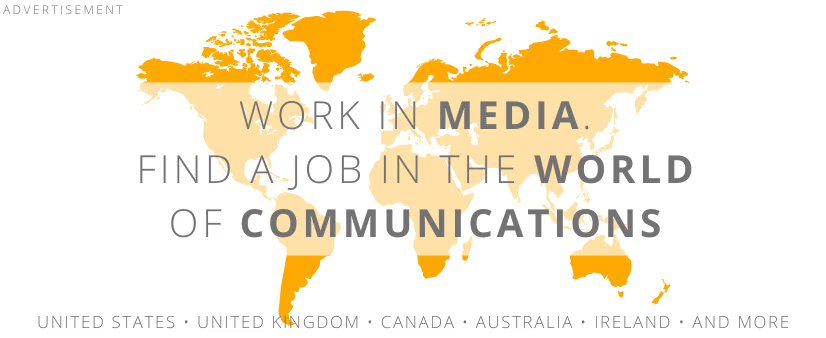 illustration: bing.com/create
illustration: bing.com/createThe introduction of AI in news media is a step forward with the potential to transform journalism. The "Digital News Report 2024" by the Reuters Institute for the Study of Journalism discusses numerous examples of AI use in media worldwide. For instance:
- Nordic publisher Schibsted uses AI to generate "highlights" at the beginning of many articles to boost reader engagement;
- in Germany, publisher Axel Springer implemented AI to write over 5% of published articles, using an AI robot called Klara Indernach. Additionally, tools like Midjourney and OpenAI`s DALL-E are used to automate graphic illustration creation;
- in Mexico, Radio Fórmula took it a step further, introducing AI-generated news presenters like Nat, who delivers news on the website and social media.
These are just a few examples of how AI is beginning to play an increasingly important role in journalism.
Data and Audience Reactions
However, the introduction of AI in media is not without controversy. According to the report, most audiences are uncomfortable with the idea of AI creating news content, especially in cases where AI is the primary author with minimal human oversight.
- Only 36% of respondents in the USA and 33% in Europe said they felt comfortable with AI being used to assist journalists,
- while only 19% and 15% in the USA and Europe, respectively, would feel comfortable if AI created content with minimal human input.
There is also a notable difference in reactions to different types of AI-generated content. Audiences are more open to using AI to create fact- and number-based content, such as sports scores or election reports, but are much more skeptical about AI generating political or crime-related content, where human understanding and sensitivity are required.
Issues of Trust and Ethics
The report also highlights that trust in media may suffer due to the introduction of AI. Concerns exist that AI could generate biased, inaccurate, or even false information, exacerbating the misinformation problem.
- 27% of TikTok users had difficulty distinguishing real content from fake. Many of these issues were associated with AI-generated content, which can be harder to verify due to its realistic nature;
- in Indonesia, the use of AI to create news met with mixed reactions. Although AI is used to automate simple reports, many respondents expressed concerns that content might be biased or inaccurate, undermining trust in media as a whole;
- in Germany, the use of AI in media faced criticism when some AI-generated articles contained factual errors, leading to a public debate about the need for greater control and transparency in using such technologies.
In surveys, many respondents stated they would prefer all AI-generated content to be clearly labeled so they could consciously choose whether to engage with it.
The Future of AI in Journalism
However, as the report data shows, there is a need for a cautious approach that considers audience trust and ethical concerns. Media adopting AI must be aware of the risks and approach transparency and content quality responsibly to maintain audience trust.
The introduction of AI in journalism, while offering many benefits, such as automation and content personalization, is also a challenge that requires responsibility and precise control to uphold fundamental journalistic values.
The full Digital News Report 2024 can be downloaded for free from:
https://reutersinstitute.politics.ox.ac.uk/digital-news-report/2024
COMMERCIAL BREAK
New articles in section Media industry
Why do we believe fakes? Science reveals the psychology of virals
KFi
Why do emotions grab more attention than evidence, and why can a fake authority overshadow scientific data? Researchers from Warsaw University of Technology, Jagiellonian University, and SWPS University in Poland sought the answers. Here are their findings.
Investigative journalism in Europe. Newsrooms face pressure
KFi, Newseria
Media and political representatives point to the difficult situation of investigative journalism in Europe. Newsrooms are reluctant to invest in this segment due to high costs and the large amount of time and effort required. Most of all, however, they fear legal proceedings.
Energy under attack. Disinformation threatens Poland’s power transition
KFi
One in five online messages about energy may be fake. Between 2022 and 2025 nearly 70,000 publications warning and condemning disinformation in this strategic sector were recorded in Polish media. They generated a reach of 1.19 billion impressions.
See articles on a similar topic:
Deepfake Blurs Truth and Falsehood. Human Perception Research
KFi
Studies indicate that only 60% of deepfake images can be correctly identified by humans. As AI begins to dominate content production, the problem of differentiation fatigue grows – users lose confidence in assessing the authenticity of information and fall into cynicism.
Business Communication and 25 Years of PR Evolution. ITBC Report
KFi
How has technology transformed the way companies communicate with clients? What connects speed of response, creativity, and crisis resilience? The ITBC Communication report reveals how communication has evolved over the past 25 years and what defines the future of business relationships.
Who Reads the Press? Studies on Credibility, Reach, and Effectiveness
Sylwia Markowska
Press for advertising clients is an effective medium for building brand trust, fame, and popularity. According to global studies, it is one of the media with the highest return on advertising. Data collected by Polskie Badania Czytelnictwa (Polish Readership Research) indicates that the press also has exceptionally high ad visibility rates, as reading requires full concentration on content.
Fake News in Poland. Challenges in Assessing Information Credibility
RINF
One in four information consumers relies on sources where verifying credibility is a significant challenge. Fake news remains a major issue, as indicated by 77% of respondents, with 51% admitting they struggle to discern truth from falsehood, according to Deloitte's *Digital Consumer Trends 2021* report.






























